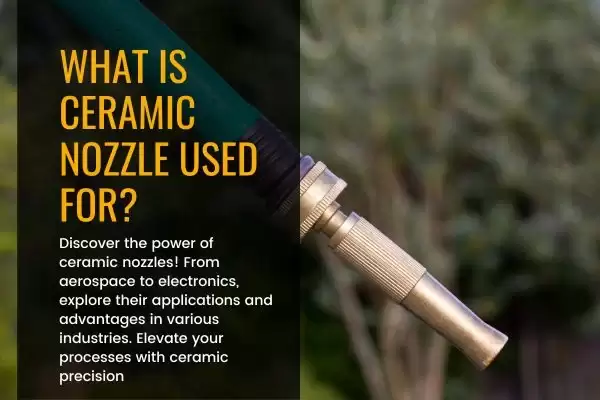
Sep 22,2023
Nozzles are unassuming yet vital components in various industries, serving as conduits for the controlled flow of various substances. Among the diverse materials used for crafting nozzles, ceramics stand out for their exceptional properties. This article will delve into ceramic nozzles, understanding what sets them apart and exploring their extensive applications across industries.
Ceramics, in the context of nozzles, refer to a class of materials known for their non-metallic, inorganic nature. Composed mainly of compounds like oxides, nitrides, and carbides, ceramics exhibit remarkable heat resistance and wear tolerance. These properties stem from the strong ionic and covalent bonds within their crystalline structures.
Ceramic nozzles differ significantly from their metal and plastic counterparts. While metals possess excellent conductivity, ceramics excel in their capacity to withstand extreme temperatures and harsh environments. This makes them invaluable in applications where precision and durability are paramount.
In aerospace, ceramic nozzles are pivotal in jet engines and rocket propulsion. The ability to withstand the searing temperatures generated during combustion makes ceramics indispensable. Additionally, they find use in coating applications, ensuring even and controlled distribution of protective layers on aircraft components.
Foundries and metal casting facilities rely on ceramic nozzles to regulate the flow of molten metal, a task that would rapidly erode conventional nozzles. Similarly, ceramics stand strong against the intense heat generated in welding and soldering processes, prolonging nozzle lifespan and enhancing process efficiency.
Ceramic nozzles find their place in spray drying and atomization processes within the chemical and petrochemical sectors. Their capacity to finely disperse liquids or powders ensures uniform coatings and controlled reactions, contributing to the high precision demanded by these industries.
In the semiconductor manufacturing and PCB fabrication processes, precision is non-negotiable. Ceramic nozzles provide the accuracy required for applying etchants, coatings, and solvents. Their non-reactive nature with many chemicals ensures purity and consistency in these critical processes.
One of the standout features of ceramic nozzles is their ability to withstand extreme temperatures. This trait is invaluable in industries where processes generate intense heat, ensuring the nozzle's longevity and reliability.
Ceramic nozzles exhibit impressive resistance to wear and corrosion. In environments where abrasive materials or corrosive substances are prevalent, ceramics outshine other materials, offering prolonged service life and minimizing maintenance requirements.
The precise flow control enabled by ceramic nozzles is a game-changer in industries where accuracy is paramount. Their uniform and controlled dispersion of substances leads to higher-quality end products and more efficient processes.
While ceramic nozzles may have a higher initial cost, their extended lifespan and reduced maintenance needs often make them a more cost-effective choice in the long run. This durability translates to increased operational efficiency and cost savings over time.
Despite their formidable properties, ceramics can be brittle. Careful handling and storage are essential to prevent accidental damage.
Not all substances are compatible with ceramic materials. It's crucial to consider the compatibility of the material being handled with the ceramic nozzle.
While ceramic nozzles offer significant advantages, they may cost more upfront than other materials. A cost-benefit analysis should determine the best fit for specific applications.
Regular cleaning and inspection routines are essential to ensure optimal performance. Gently remove any accumulated residue or debris to prevent clogs or damage.
When not in use, ceramic nozzles should be stored in a safe, dry environment away from potential sources of impact or abrasion.
As with any component, ceramic nozzles have a finite lifespan. Monitoring their condition and replacing them when signs of wear become evident is crucial to maintaining process efficiency.
Ceramic nozzles, though unassuming, are the unsung heroes behind many industrial processes. Their unique properties make them indispensable in applications where extreme conditions and precision are non-negotiable. By understanding their capabilities and considerations, industries can harness the full potential of ceramic nozzles to elevate their operations to new heights of efficiency and quality.